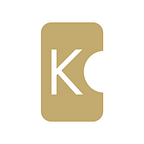7 Things You Need to Know About Gold
The 21st century tests for strength everything that has been created throughout the human history. The best inventions that appear in our life manage to pass it, while the rest have to leave the stage forever.
Gold, which has been a symbol of power at all times, also faces some challenges of the modern world. Let us look at the key facts that can show what role the gold is going to play soon.
1. According to the World Gold Council, all the gold ever mined currently totals 187,200 metric tons.
The bulk of gold reserves fall on central bank, private investments and jewelry. With an average spot price of $1,275 per ounce, the cost of a global gold reserve can be estimated at $7.7 trillion.
Is this a lot or a little?
In comparison, the total value of all issued banknotes and coins on earth is $7.6 trillion. Thus, behind every dollar or euro that you have ever held in your hands stands the much greater volume of gold.
2. The world’s largest economies believe in gold more than in any other currency reserve.
The United States of America is the custodian of the largest gold reserves in the World. It owns 8,133 tons of gold, which is 74.5% of their reserve assets.
Germany takes here the second place globally and the first place in Europe, and owns 3,370 metric tons of gold, which is 69.9% of reserve assets of this country.
The other top 8 countries with the largest gold reserves are: China, Russia, Japan, Switzerland, Italy, France, the Netherlands and India.
3. Gold gains increasing credibility from central banks over the past decade.
Beginning from 2010, the global central banks have turned from net gold sellers into net gold buyers. In 2017, their activity increased by 36% and amounted to 366 tons of net purchase, which is a significant increase since the year 2016.
Last year, the gross sales in the official sector fell to the lowest level since 2014 by 55%, which resulted to the fact that the holders ceased to sell the available gold.
The present year may become the year of the central banks’ strongest demand for gold. In accordance to the World Gold Council, in the first quarter of 2018 it increased by 42% compared to the same period of the previous year, and the net demand is now equal to 116.5 metric tons.
This indicates that the central banks foresee a strong increase in value of gold, which historically is considered as a safe haven asset.
4. Gold gains increasing credibility from professional investors.
As the global debt continues to grow and the global economy becomes more unstable, individual investors are actively investing in gold, which has historically proved itself in times of economic decline and geopolitical uncertainty.
The current situation is obvious for professional investors, who assign to gold an increasing share of their portfolios. According to the World Gold Council, the annual volume of gold bought by investors has increased by no less than 235% over the past three decades.
5. Today, the growth of gold is artificially restrained in large part by adopting regulatory acts affecting its price.
A case in point is the “Dodd-Frank Wall Street Reform and Consumer Protection Act”, which has directly restricted the right of the residents to trade precious metals, including gold.
The new rules have affected not only big banks and companies, but private investors who have been investing in gold. Let us recall that before adoption of these laws, the price of gold has been setting records almost every week.
However, due to regulatory restrictions, the investment potential of gold has remained the same; it is being artificially held back, giving preferences to unsecured fiat money, since fiat money is what the most countries of the world base the debt-built economy on.
Financial bubble of unsecured fiat money definitely cannot grow for long. What will happen if its bursts? The answer is obvious: there will be a sharp depreciation of fiat money and need in such assets that have real value, primarily in gold.
6. Something backed by gold is a better thing to invest in.
Gold as an investment tool has traditionally occurred in several forms — gold bars, investment gold coins and gold sand. Upon that, in different countries the purchase of gold is subject to various taxes, including the value-added tax.
Thus, taxes artificially reduce the investment attractiveness of gold and reduce the effective rate of return.
Consequently, the best investments are those that are sent to assets secured by gold and possess all the advantages of metal gold.
7. The 21st century has gifted us physical gold in digital form.
In 2018, KaratGold issued a cryptocurrency secured by physical gold. KaratGold Coin is a gold equivalent and can be used both as an investment tool and a blockchain-based cryptocurrency specifically designed to be used as a generally accepted digital payment.
The new cryptocurrency physically secured by gold is also a liquid payment instrument, which allows to promptly make any necessary payments while maintaining the reliability of investments.
In conclusion, therefore, it can be noted that in the 21st century gold has not only strengthened its position in the global economy but has also acquired new forms that allowed it to confidently enter the digital future.
